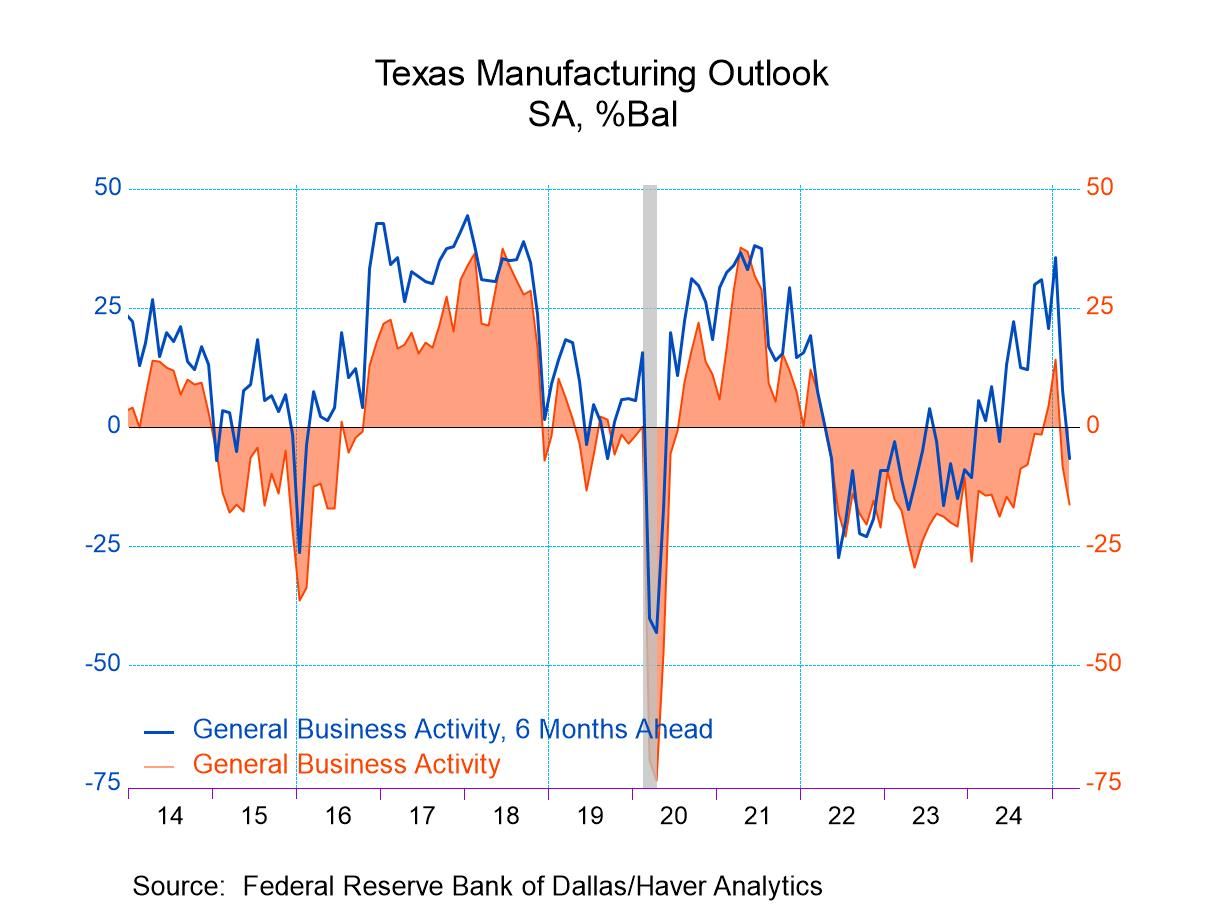EMU Industrial Output Sputters Ahead

Industrial output in the European Monetary Union continued to struggle. In November, it has advanced (for the headline series excluding construction) for the second month in row. However, a sharp drop in September leaves the three-month change in output falling at a 4.8% annual rate. Output still grows by 0.2% at an annual rate over six months but falls by 1.9% year-over-year. The output path is not draconianly weak, it is not even clearly weakening further, it is simply still challenged, fighting what appears to be still-stiff headwinds.
Manufacturing sector trends- Manufacturing output results are nearly the same as for the headline. Manufacturing sectors show progressive weakening from 12-months, to 6-months, to 3-months for consumer goods output. Both consumer durables and nondurable goods output show sporadic weakens but it is only when they are combined that consumer goods output as a total makes the progressive nature of weakening apparent. Intermediate goods output declines on all horizons from 12-months to 6-months to 3-months, but it is not clearly trending. Capital goods output drops over 12 months and falls even more sharply over three months but manages to make a gain over six months preventing a clear statement about the trend being made.
EMU PMI for MFG- The manufacturing PMI for the EMU is below 50 for each of the last two months and over three months, six months, and 12 months as well.
QTD: Quarter-to-date- Quarter to date IP tracking shows declines in all sectors except capital goods output. Tracking output developments since COVID arrived from January 2020-to-date, output is higher only for overall consumer goods and that is driven only by the component consumer nondurable goods output. However, capital goods output is nearly unchanged on that horizon; the current level of capital goods output is lower than its January 2020 level by only 0.5%.
Growth rankings- The ranking of year-on-year growth rates for November compared to all year-on-year growth rates since early-2007 shows no sector ranking higher than 38%. All rankings are below their median rates of growth over this period. The growth ranking for overall IP and for manufacturing are near their 25th percentiles marking them essentially lower quartile growth results.
Country data The country data for 13 EMU members show four declines in November month-to-month following five with month-to-month declines in October and seven in September. The breadth of weakness on this measure has been diminishing. The country of declining output over 12 months, six months, and three months has been progressively falling as well -another good sign. And the median annualized growth rate has been rising over this span. However, quarter-to-date as of November, there are still seven countries showing output declines in progress with one at unchanged. Output is rising QTD in only five of thirteen EMU nations. However, in terms of growth rankings, there is relatively stronger growth only for the smallest countries in the EMU.
Summing up Growth rankings are above the 50% median mark only for Finland, Greece, Belgium, and Malta. The big four economies Germany, France, Italy, and Spain, each have growth rankings below their respective historic medians with an average ranking of 26.5% - again near the lower quartile border. The EMU area is performing poorly with growth sputtering and weak growth still the order of business across sectors as well as across member nations.

Robert Brusca
AuthorMore in Author Profile »Robert A. Brusca is Chief Economist of Fact and Opinion Economics, a consulting firm he founded in Manhattan. He has been an economist on Wall Street for over 25 years. He has visited central banking and large institutional clients in over 30 countries in his career as an economist. Mr. Brusca was a Divisional Research Chief at the Federal Reserve Bank of NY (Chief of the International Financial markets Division), a Fed Watcher at Irving Trust and Chief Economist at Nikko Securities International. He is widely quoted and appears in various media. Mr. Brusca holds an MA and Ph.D. in economics from Michigan State University and a BA in Economics from the University of Michigan. His research pursues his strong interests in non aligned policy economics as well as international economics. FAO Economics’ research targets investors to assist them in making better investment decisions in stocks, bonds and in a variety of international assets. The company does not manage money and has no conflicts in giving economic advice.






